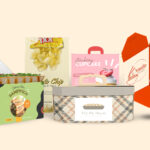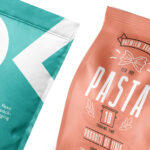In today’s fast-paced world, having an impactful brochure design for small business can make all the difference. Many small business owners wonder how such a seemingly simple document could significantly influence their marketing success. But when done right, a brochure can be a powerful tool for informing and engaging customers, effectively converting their interest into actionable business opportunities.
Before diving into the intricacies of brochure design for small business, it’s vital to understand why brochures still hold relevance in a digital age saturated with online content. Whether you’re in a small town or a bustling city, a well-designed brochure can serve as a physical reminder of your business, bridging the gap between digital marketing and personal interaction.

Understanding the Importance of Brochure Design
So why are brochures still relevant? A thoughtfully crafted brochure is more than just a piece of paper with some text and images. It reflects your brands identity and showcases the value you bring to customers. In creating a brochure design for small business, you’re essentially condensing everything that makes your business unique into an easily digestible format that clients can take with them.
A brochure delivers information efficiently and engages the reader in a manner that digital ads can’t always achieve. Your potential customers can hold it, fold it, and refer back to it whenever needed. This tangible quality makes brochures an invaluable part of any small business’s promotional strategy. For more insights on brochure effectiveness, check out this guide from Printivity.
Key Elements of an Effective Brochure Design
1. Captivating Cover
Your brochure’s cover page is the first impression you make. A striking cover should captivate the audience’s attention and encourage them to explore further. Consider using bold colors, engaging headlines, and intriguing graphics to spark curiosity.
2. Engaging Content
The content within your brochure should be concise yet engaging. Use simple, clear language to communicate key messages about your products or services. Remember, the goal is to convert interest into business, so always include a strong call-to-action (CTA).
3. Visual Hierarchy
This relates to the arrangement of text and images to guide readers naturally through the content. Using headings, subheadings, bullet points, and images strategically can make the information more accessible and engaging. For more ideas on organizing visual content, you might look at how to manage and label digital photos effectively.
4. Quality Images
Images play a vital role in establishing an emotional connection with the reader. High-quality visuals can convey messages that words alone cannot. Use vibrant photos and graphics that align with your brands story and the theme of your brochure.
Steps to Design a Compelling Brochure
1. Define Your Purpose
Every brochure design for small business should start with clear objectives. Whether it’s to inform, promote, or maintain customer loyalty, understanding your purpose will guide the content and design process.
2. Know Your Audience
Understanding your target audience is crucial. Design with your customer’s preferences and behaviors in mind. Consider conducting market research or analyzing existing customer data for insights.
3. Plan Your Layout
Decide on a layout that complements your message. Your layout should guide the reader naturally through the content, providing a seamless flow from one section to the next.
4. Choose the Right Font and Colors
A cohesive font and color scheme will make your brochure visually appealing. Ensure that the text is readable and that colors reflect your brand’s identity and tone.
The Role of Professional Services in Brochure Design
While DIY options exist, working with a professional design service can elevate your brochure to new heights. Professional designers bring expertise, offering modern design trends and insights that can set your business apart from the competition. Platforms like Canva offer valuable resources and templates to get started.
Using Print to Stand Out
Printing quality is as important as design itself. Choose a print service that can deliver expertly finished products. Remember, the tactile nature of a brochure is what makes it uniqueensure the print quality reflects that. If you want to know more about high-quality printing, you could learn a thing or two from printing on label stickers.
Cost-Effective Brochure Design Tips
1. Template Utilization
Templates can save time and cost while ensuring professional quality. Many online platforms offer free and premium templates to cater to different business needs.
2. Do-It-Yourself Design
If budget constraints exist, consider designing your brochure. With the right tools and a creative mindset, you can produce something unique that aligns with your brand’s identity.
3. Bulk Printing
Ordering print jobs in bulk can significantly reduce costs. Discuss options with your printing service to find the best balance between cost-saving and quality.
Reaching Your Audience with Brochures
Once your brochure design for small business is complete, consider combining it with a robust distribution strategy. Hand out brochures during local events, send them through direct mail, or include them in customer packages. The key is to integrate your brochures into existing marketing efforts for maximum reach.
Conclusion
In conclusion, understanding the art and science behind brochure design for small business can transform your marketing outcomes significantly. These small but powerful tools have stood the test of time, offering a tangible touchpoint between your business and prospective customers. Embrace creativity, plan carefully, and always align your design with your brand. And remember, your brochure is more than a piece of paperit’s a glimpse into what your business stands for.

FAQs on Brochure Design for Small Businesses
1. What should be included in a small business brochure?
Your small business brochure should include key elements such as a captivating cover, engaging content, clear calls to action, quality images, and essential contact information. You can also highlight unique selling points and testimonials.
2. How can I ensure my brochure stands out?
To ensure your brochure stands out, focus on a creative and professional design that aligns with your brand. Use high-quality images, a strong color palette, and a clear structure. Consulting with professional designers and utilizing effective printing techniques will further enhance your brochure’s appeal. For additional insights, consider learning how labels can improve stickiness for marketing materials.
3. Are digital brochures a good option for small businesses?
Digital brochures are an excellent addition to physical brochures for small businesses. They allow for easy distribution through emails and social media and can reach a wider audience. Digital brochures should still maintain the same quality of design and content strategy as printed ones.
This article contains affiliate links. We may earn a commission at no extra cost to you.






